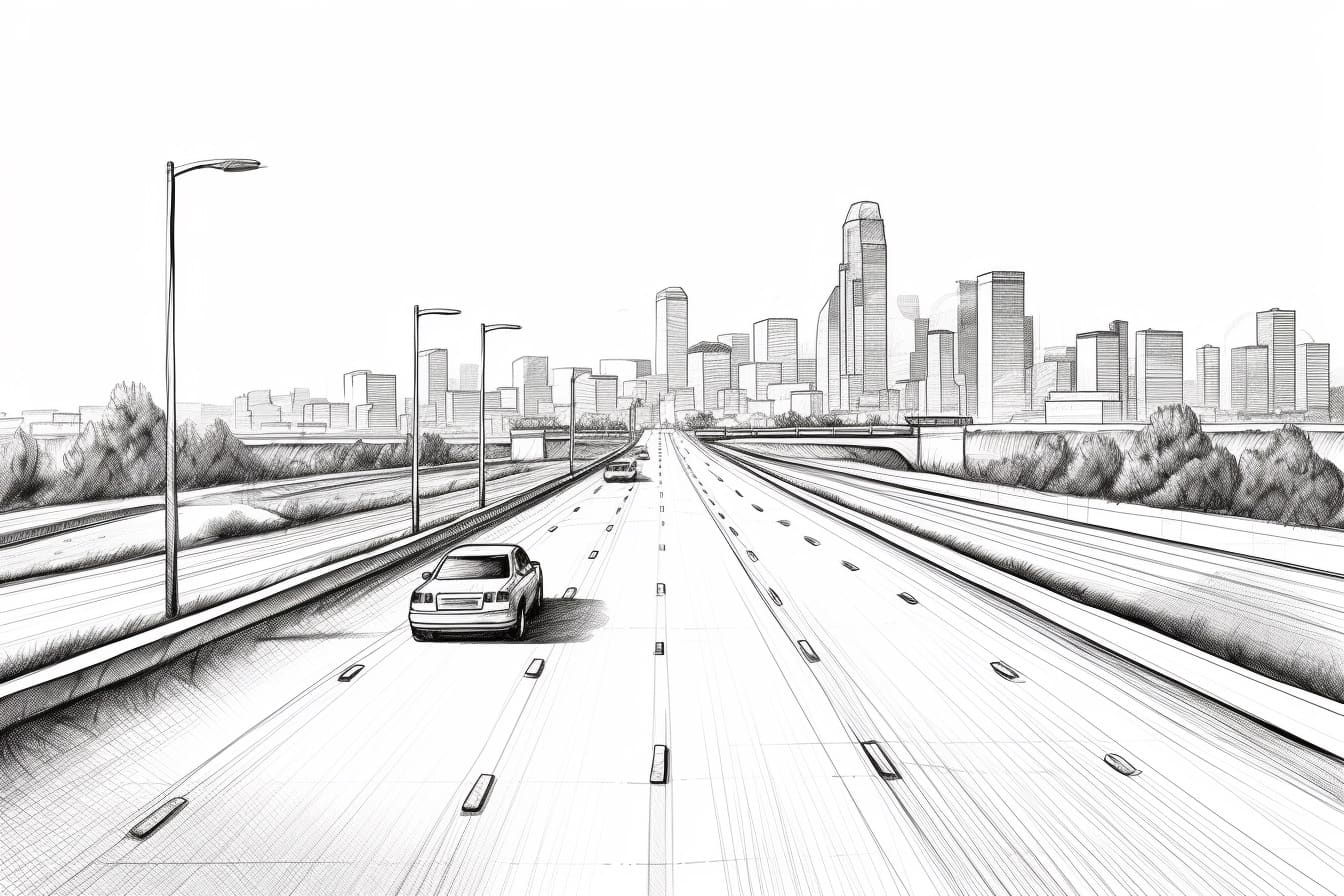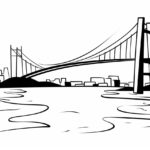Welcome to this step-by-step guide on how to draw a highway. Whether you’re an aspiring artist looking to improve your skills or simply want to have some fun creating a detailed drawing, this tutorial is for you. By following these easy instructions, you’ll be able to create a realistic and impressive highway scene on paper. So, let’s get started!
Materials Required
Before we begin, make sure you have the following materials:
- Drawing paper: Choose a medium-weight paper that is suitable for sketching and drawing.
- Pencils: You’ll need a range of graphite pencils, including H, HB, and B grades, to achieve different levels of darkness and shading in your drawing.
- Eraser: A good quality kneaded eraser is ideal for removing any mistakes or unwanted lines.
- Ruler: A straight-edged ruler will help you create straight and accurate lines for the highway.
- Reference image: Find a clear and detailed reference image of a highway to use as a guide throughout the drawing process.
Now that you have all the necessary materials, let’s begin the step-by-step process of drawing a highway.
Step 1: Prepare Your Workspace
Start by setting up your workspace in a well-lit area. Ensure that you have a clean and clutter-free surface to work on. Place your drawing paper on a drawing board or a hard-backed surface for stability.
Step 2: Outline the Horizon Line
Using a light H-grade pencil, lightly draw a straight line across the middle of your paper. This line represents the horizon and will serve as a guide for the rest of your drawing.
Step 3: Sketch the Background
Observe the reference image and use light pencil strokes to sketch the basic shapes and elements of the background. Start with the distant landscape and then gradually work your way forward. This includes any mountains, trees, or buildings that may be present.
Step 4: Define the Highway Shape
Using a ruler and darker pencil strokes, draw the shape of the highway on your paper. Make sure the lines are straight and accurate. Pay attention to any curves or bends in the road and replicate them as closely as possible.
Step 5: Add Lane Dividers
Using your ruler, draw the lane dividers on the highway. These are usually solid or broken lines that separate the lanes of traffic. Make sure they are evenly spaced and parallel to each other.
Step 6: Draw the Road Markings
Next, add the road markings such as arrows, symbols, or words, if present on the reference image. Use your ruler to ensure they are straight and properly aligned. These markings provide important information to drivers, so take your time to replicate them accurately.
Step 7: Add Texture to the Road
To make the road look more realistic, add texture by drawing small irregular lines or dots along the length of the highway. This mimics the texture of asphalt or concrete. Vary the darkness and spacing of these lines to create depth and dimension.
Step 8: Draw the Surrounding Landscapes
Now focus on the landscapes on either side of the highway. Pay attention to any vegetation, hills, or structures that may be present. Use different pencil grades to create various levels of shading and depth.
Step 9: Shade the Highway
Using a combination of light and dark pencil strokes, shade the highway to create depth and dimension. Pay attention to the direction of light in your reference image and shade accordingly. Use an eraser to soften or lighten areas that need to appear brighter.
Step 10: Add Details
Lastly, add any additional details such as road signs, streetlights, or vehicles to complete your highway drawing. These details will bring your drawing to life and add interest to the scene. Take your time and pay attention to the proportions and placement of these elements.
Conclusion
Drawing a highway can be a challenging yet rewarding artistic endeavor. By following these step-by-step instructions and using the right materials, you’ll be able to create a realistic and detailed highway scene. Remember to practice and experiment with different techniques to further improve your drawing skills. So grab your pencils, reference image, and get ready to create an impressive highway drawing!









